If you’re someone who loves the thrill of the open road, the wind in your hair, and the sense of freedom that comes with pedaling through picturesque landscapes, then you’re in the right place. Cycling is not just a mode of transportation; it’s a lifestyle, a passion, and a fantastic way to stay fit and explore the world around you.
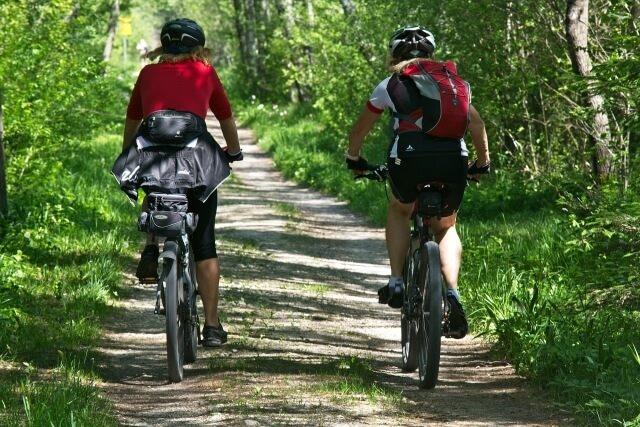
However, with great joy comes the responsibility of safety. In this article, we’re diving into a topic that’s crucial for every cyclist – preventing injuries while cycling. Whether you’re a seasoned rider or just strapping on your helmet for the first time, we’ve got you covered with practical tips and insights that will keep you pedaling smoothly and safely on your two-wheeled adventures. So, let’s saddle up and ride into the world of safe cycling together!
Top Tips for Being Safe While Riding
Ready to ride safely? Let’s explore top tips for a secure cycling adventure. Keep your bike well-maintained, especially brakes and tire pressure. A fitted helmet is a must for head protection. Enhance visibility with lights and reflectors. These essentials ensure a safe and enjoyable ride.
1. Choosing the Right Bike
Different types of bicycles
Choosing the right bike is a crucial step in your cycling journey. With a variety of bicycle types out there, it’s important to select one that matches your intended riding style. If you’re into exploring rugged trails and tackling off-road terrain, a mountain bike is your go-to companion. Its sturdy build and knobby tires offer stability and traction on uneven surfaces.
For those who prefer smooth city streets or paved paths, a road bike is your best bet. Its lightweight frame and narrow tires provide speed and efficiency. If leisurely rides and comfort are your priorities, a cruiser bike is a charming option with its relaxed posture and classic design.
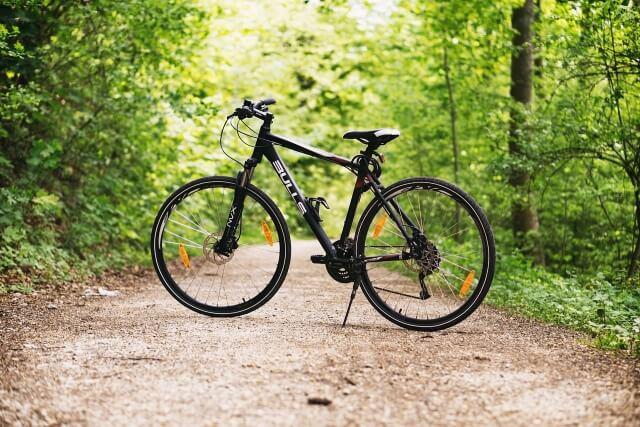
And let’s not forget about the versatile hybrid bike – a blend of mountain and road bikes, perfect for urban commuting and light trail adventures. Before you hit the pedals, consider your riding style and terrain, and choose the bike that suits you best.
Proper bike fit and adjustments
A proper bike fit is key to a comfortable and injury-free cycling experience. Ensuring your bike is adjusted to your body’s specifications is like tailoring a suit – it should fit just right.
Start with saddle height – your leg should be slightly bent at the bottom of the pedal stroke. Handlebar height and reach should allow a relaxed grip without straining your back. Adjust the saddle’s tilt to support your pelvis and avoid discomfort. Your feet should be properly positioned on the pedals, with knees tracking straight.

Every adjustment contributes to a smooth and harmonious ride. A well-fitted bike maximizes efficiency and minimizes the risk of strain or injury. Take the time to fine-tune your bike setup, and you’ll be grateful later.
2. Wearing Protective Gear
Helmet selection and fitting
Donning protective gear, especially a helmet, is your shield against potential hazards while cycling. Think of it as strapping on a safety net for your head. When selecting a helmet, opt for one that meets safety standards and suits your riding style. Mountain biking may call for a more rugged design, while road cycling might favor aerodynamics.
Once you’ve chosen your helmet, it’s time for the perfect fit. Position it squarely on your head, covering your forehead, and fasten the straps snugly beneath your chin. It should sit level and not obstruct your vision. A well-fitted helmet is like a second skin, offering crucial protection in case of falls or collisions.

Gloves, knee pads, and elbow pads
Equipping yourself with gloves, knee pads, and elbow pads is like adding an extra layer of armor to your cycling ensemble. Think of them as your partners in protection, ensuring a safer and more comfortable ride. Gloves offer grip and cushioning, reducing the impact of vibrations and enhancing control. They’re like your trusty grip on the handlebars.
Knee pads and elbow pads are your cushioned shields against potential scrapes and bruises. Imagine them as your safety buffers, absorbing shocks and minimizing the risk of injuries during falls.
When choosing these protective gears, prioritize a snug yet comfortable fit. Gloves should allow finger movement and provide adequate padding. Knee pads should cover your knee joint completely, and elbow pads should fit securely without restricting movement.
These gears are your reliable companions, ready to support you as you navigate twists and turns on the road or trail. By embracing protective gear, you’re enhancing your cycling experience with an added layer of safety, ensuring that your rides remain enjoyable and injury-free.
3. Maintaining Your Bicycle
Regular maintenance checks
Maintaining your bicycle is like nurturing a well-tuned instrument – it ensures smooth performance and longevity. Regular checks are your way of keeping the melody of your ride in harmony. Begin with tire pressure – proper inflation guarantees a comfortable and efficient journey. It’s like ensuring each note is perfectly tuned.
Check your brakes for responsiveness, as they’re your powerful chords for control and safety. Lubricate your chain regularly, just as a musician would care for their instrument’s strings.
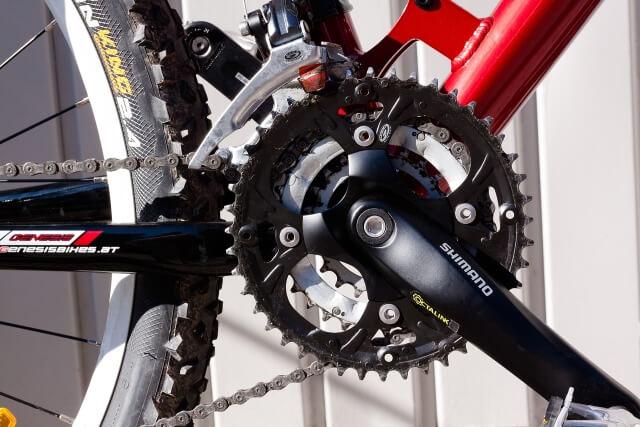
Inspect your gears for smooth shifting, ensuring your ride’s rhythm is seamless. Think of it as adjusting the keys of a piano for flawless melody transitions. A well-maintained bicycle is your symphony of efficiency and reliability, ready to hit the road or trail without missing a beat. By dedicating time to regular maintenance, you’re not just a rider – you’re a conductor, orchestrating a harmonious cycling experience that sings with every pedal stroke.
Keep tires properly inflated
Maintaining tire pressure is crucial for a smooth ride. Think of it as optimizing your bike’s performance. Check pressure regularly using a gauge, avoiding both under and over-inflation. Proper tire pressure ensures grip and control, whether you’re cruising streets or tackling trails. Keep those tires balanced, and you’re set for a fantastic cycling adventure!
4. Understanding Road Rules and Signals
Familiarizing with traffic rules
Mastering road rules and signals is crucial for safe cycling. Think of it as speaking the language of the road. Learn and obey traffic rules, just like following guidelines. Signal your intentions using hand signals for turns and stops. By understanding these rules, you communicate safely with fellow road users. Pedal confidently, knowing you’re part of a shared journey toward safe cycling adventures!

Hand signals and communication
Hand signals and communication are your tools for clear interaction on the road. Think of them as your language of movement. Use signals to indicate turns and stops, ensuring others understand your intentions. It’s like speaking without words, a universal way to communicate your next moves.
By using hand signals effectively, you’re fostering a safer environment for yourself and fellow road users. Pedal confidently, knowing your gestures help navigate the road smoothly and harmoniously.
5. Safe Cycling Routes
Choosing bike-friendly paths
Think of them as your navigation through a cycling adventure. Opt for bike-friendly paths that prioritize your safety and comfort. Look for dedicated bike lanes and shared paths, ensuring a smooth and secure journey. By choosing safe cycling routes, you’re setting the stage for a pleasant experience, allowing you to pedal confidently and explore new horizons on your cycling journey.
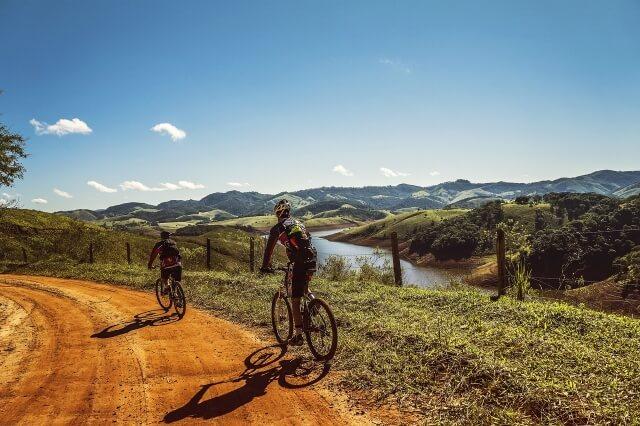
Avoiding high-traffic areas
Opt for quieter routes and roads with fewer vehicles. Choose paths that reduce your interaction with busy traffic, prioritizing your well-being. By steering clear of congested areas, you create a safer space for your cycling journeys, allowing you to pedal smoothly and enjoy the open road with confidence.
6. Riding in Different Weather Conditions
Tips for cycling in the rain and wet conditions
Cycling in various weather conditions requires preparation. When it comes to rain and wet conditions, consider these tips to stay safe and comfortable. Choose appropriate clothing like waterproof jackets and pants to shield yourself from the elements. Ensure your bike has proper fenders to minimize water splashes. Adjust your riding style by braking gently and taking turns cautiously on slippery surfaces. Check tire traction and reduce speed if needed.

Precautions during hot weather
When cycling in hot weather, taking precautions is vital. Stay hydrated by carrying enough water and sipping regularly. Dress in lightweight and breathable clothing to keep cool. Apply sunscreen to protect your skin from sunburn. Plan rides during cooler parts of the day and take breaks in shaded areas to avoid heat exhaustion. Keep an eye on your body for signs of overheating, such as dizziness or fatigue.
7. Staying Visible and Alert
Using reflectors and lights
Staying visible and alert while cycling is essential. Equip your bike with reflectors and lights, ensuring you’re easily seen by other road users, especially during low-light conditions. Attach lights to the front and rear of your bike, and consider adding reflective tape to your helmet and clothing. These measures enhance your visibility, making you a prominent presence on the road. By using reflectors and lights, you’re taking a proactive step towards safety, ensuring you’re noticed and able to navigate with confidence.
Avoiding distractions while riding
Staying alert while cycling is essential for safety. Keep your attention on the road, refraining from using devices. Maintain both hands on the handlebars for better control. By staying attentive and distraction-free, you ensure a clear mind and quick reactions, allowing you to navigate smoothly and enjoy your cycling journey without compromising safety.
8. Proper Body Posture
Correct body positioning on the bike
Maintaining proper body posture while cycling is key. Think of it as aligning yourself for an efficient and comfortable ride. Keep your back straight and relaxed, like finding your natural stance. Bend your elbows slightly and grip the handlebars comfortably. Your knees should track in line with your feet, ensuring a smooth pedal stroke.

By focusing on correct body positioning, you’re optimizing your cycling performance and reducing the risk of strain or discomfort. Ride with a balanced posture and let your body move in sync with your bike for a more enjoyable and successful cycling experience.
Avoiding strain and discomfort
Avoiding strain and discomfort while cycling is essential for an enjoyable ride. Ensure your bike is properly adjusted to your body, with the saddle at the right height and the handlebars at a comfortable reach. Maintain a relaxed grip on the handlebars to ease tension in your arms and shoulders. Shift your body weight as needed to distribute pressure evenly. By prioritizing comfort and avoiding strain, you’re setting the stage for a pleasurable and pain-free cycling journey.
9. Hydration and Nutrition
Importance of staying hydrated
Staying hydrated while cycling is paramount for optimal performance. Think of it as fueling your body’s engine to keep it running smoothly. Dehydration can lead to fatigue and decreased focus, affecting your ride.
Carry a water bottle and take regular sips, much like quenching your thirst on a hot day. Hydration helps regulate body temperature and maintain energy levels. By prioritizing fluid intake, you’re ensuring your body operates at its best, allowing you to pedal with vigor and relish in the joy of your cycling adventures.
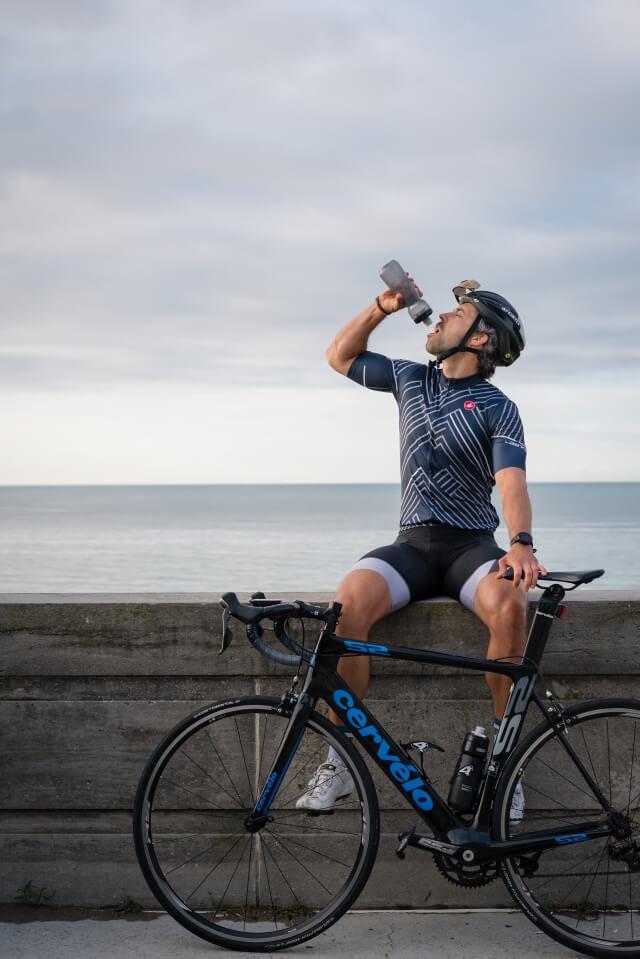
Fuelling your body for long rides
Stock up on supplies for an extended journey. Consume a balanced mix of carbohydrates, proteins, and fats to sustain your ride. Snack on energy bars, nuts, or fruits to keep your energy steady. It’s like giving your body the right tools to keep going.
Listen to your body’s cues and eat before you’re hungry or fatigued. By nourishing yourself adequately, you’re ensuring that your body has the necessary sustenance to pedal through those long and rewarding rides.
10. Dealing with Road Hazards
Avoiding potholes and debris
Navigating road hazards while cycling requires vigilance. Think of it as picking a clear path through an obstacle course. Keep your eyes ahead and scan the road for potholes, debris, or obstacles. It’s like charting a course to avoid rough waters. Shift your weight slightly to lift the front wheel if needed, just as you’d steer a ship through turbulent waves.
By staying alert and proactive, you’re minimizing the risk of accidents and ensuring a smooth and safe cycling journey. So, pedal with caution and master the art of road hazard evasion for a seamless ride!
Techniques for navigating rough terrain
Navigating rough terrain on your bike requires finesse. Think of it as a dance between you and the landscape. Shift your weight back and lower your saddle slightly for better balance, much like adjusting your stance. Keep a firm grip on the handlebars and bend your elbows to absorb shocks, similar to the rhythm of a dance.
Choose your lines carefully, like picking the right steps. Pedal smoothly and maintain a steady cadence, as if you’re following the tempo of the trail. By applying these techniques, you’re gracefully gliding through rough terrain, ensuring a thrilling and controlled cycling adventure.
11. Knowing Your Limits
Listening to your body
Knowing your limits while cycling is essential for a safe and enjoyable ride. Think of it as understanding the boundaries of your performance. Listen to your body’s cues – if you’re fatigued or experiencing discomfort, it’s like recognizing when to take a break. Pace yourself and avoid pushing beyond your capabilities, much like maintaining a steady rhythm.

Pay attention to your breathing and heart rate, adjusting your effort accordingly. By tuning in to your body’s signals, you’re ensuring a ride that respects your limits and allows you to pedal with comfort and confidence.
Gradually increasing intensity and distance
Gradually increasing intensity and distance in your cycling routine is like building a strong foundation. Think of it as adding layers to your journey. Start with manageable distances and moderate intensity, similar to laying the groundwork. Slowly increase your ride duration and effort, much like adding bricks to a structure.
Pay attention to how your body responds, adjusting the pace accordingly. By gradually pushing your boundaries, you’re steadily expanding your cycling capabilities, ensuring progress without overexertion. So, pedal with patience and watch your cycling skills and endurance grow, layer by layer.

Conclusion
In the world of cycling, safety is the compass that guides us through exhilarating adventures. By embracing these essential tips, you’re not only safeguarding yourself but also enhancing the joy of every pedal stroke. From choosing the right gear to navigating challenging terrains, each facet plays a crucial role in ensuring your cycling journey is as safe as it is thrilling.
Remember, cycling is a harmonious symphony between you, your bike, and the open road. Just as a conductor leads an orchestra, you orchestrate your ride by staying visible, hydrated, and in tune with your body. By respecting road rules, understanding your limits, and anticipating hazards, you’re setting the stage for a symphony of secure and satisfying cycling experiences.

So, pedal forth with confidence, embracing these safety practices as your loyal companions. Whether you’re tackling city streets, conquering winding trails, or embarking on lengthy journeys, your commitment to safety is the key to unlocking the full potential of your cycling passion. As you navigate the intricate pathways of cycling safety, may each turn, each climb, and each descent becomes an invigorating movement in the grand composition of your cycling escapades. Happy and safe cycling!









